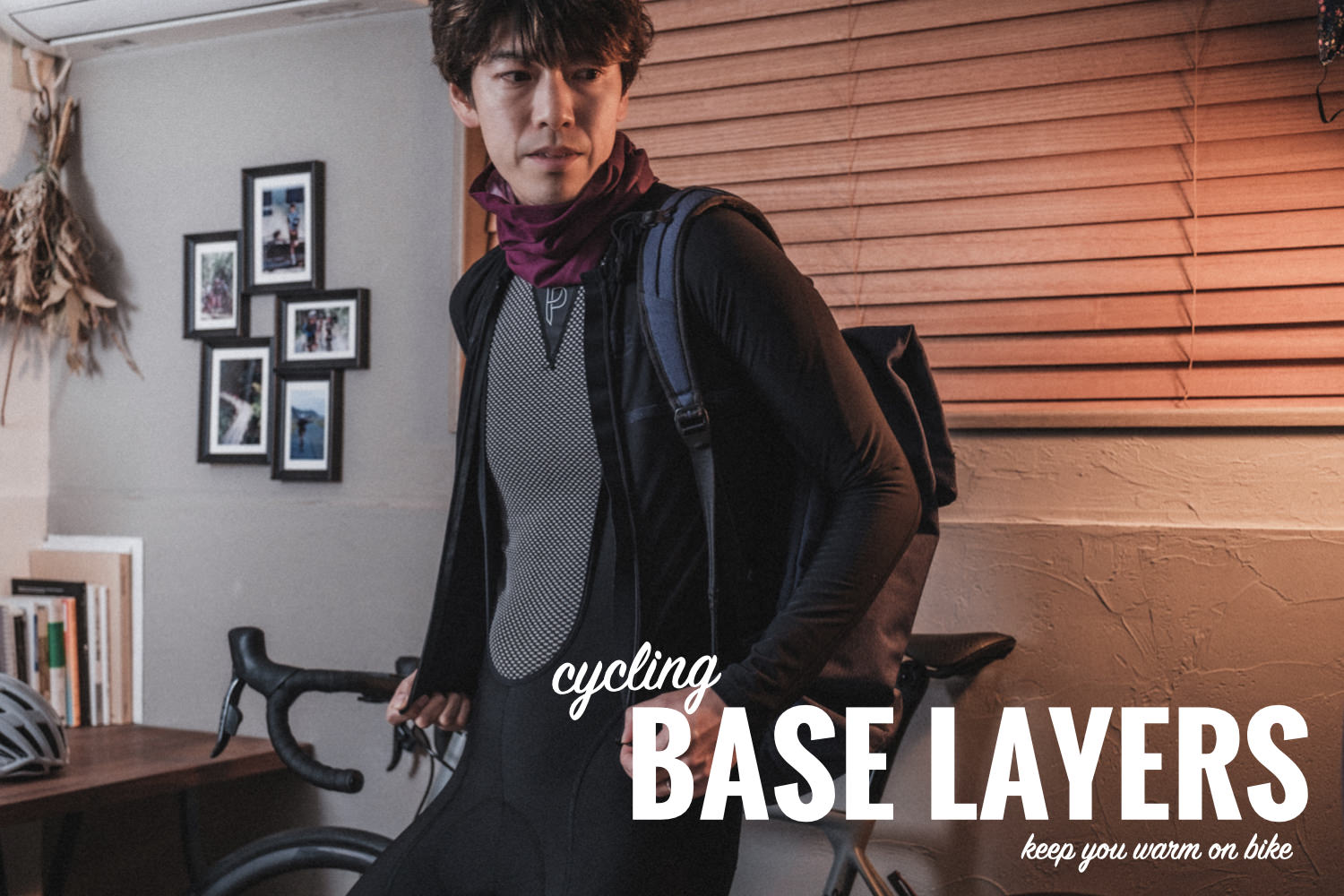
The first layer is super important.
Of all the clothing worn in winter, the base layer, which is in close contact with the skin, is the most important item that affects body temperature regulation. In winter, sweat and cold can make you feel ill, so the performance of your clothing can make or break your ride.
However, it may be difficult to know which one to choose, as the fabric material and thickness vary from brand to brand. Therefore, to help you find a base layer that suits your riding style, we will introduce how to choose and recommend products.
text / Tats (@tats_lovecyclist)
Contents
1. Types of winter base layers
Base layers are selected based on fabric thickness and material.
Fabric thickness
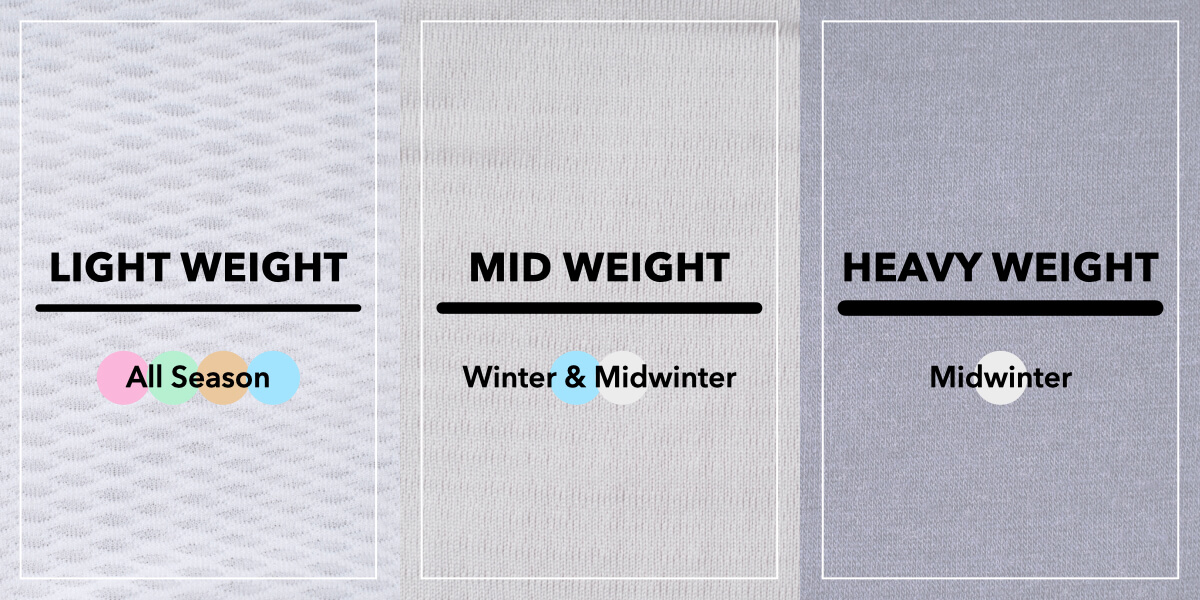
Light Weight
It can be used in all seasons and can be layered with other base layers in the middle of winter. It dries quickly, is easy to move around in, and causes the least amount of stress.
Midweight
The most versatile medium thickness in fall and winter. Its moderate thickness does not hinder movement, making it stress-free even in cooler temperatures.
Heavy Weight
This thicker material is ideal for riding in extremely cold climates or for low-intensity winter rides. Because of this, it sacrifices quick-drying and heat-dissipating properties, so it is not suitable for high-intensity training rides.
Fabric Materials
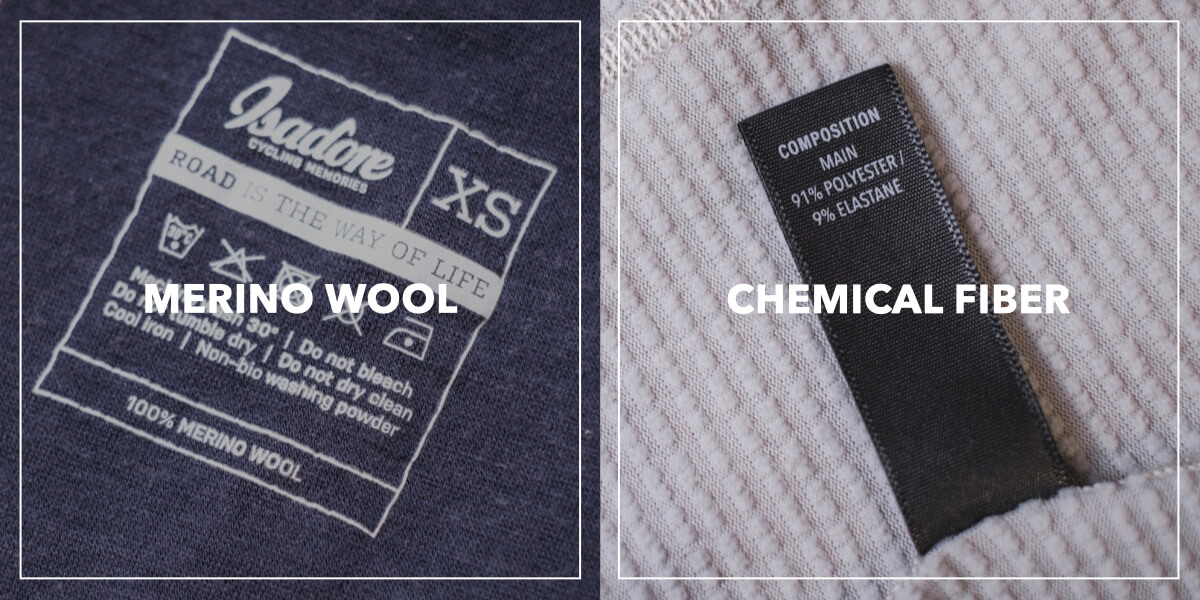
Merino Wool
The material itself absorbs moisture and generates heat, providing excellent heat retention, as well as a pleasant texture and high antibacterial properties.
Because it is a natural material, it is sometimes said to be less quick-drying than synthetic fibers, but since sports merino is blended with synthetic fibers, there is little difference in functionality.
Synthetic Fiber
Its greatest feature is its excellent quick-drying properties. It allows perspiration to permeate the fabric and prevent it from returning wet, making it comfortable even after an intense ride.
Some materials are as good as wool in terms of heat retention.
2. How to choose & combine base layers
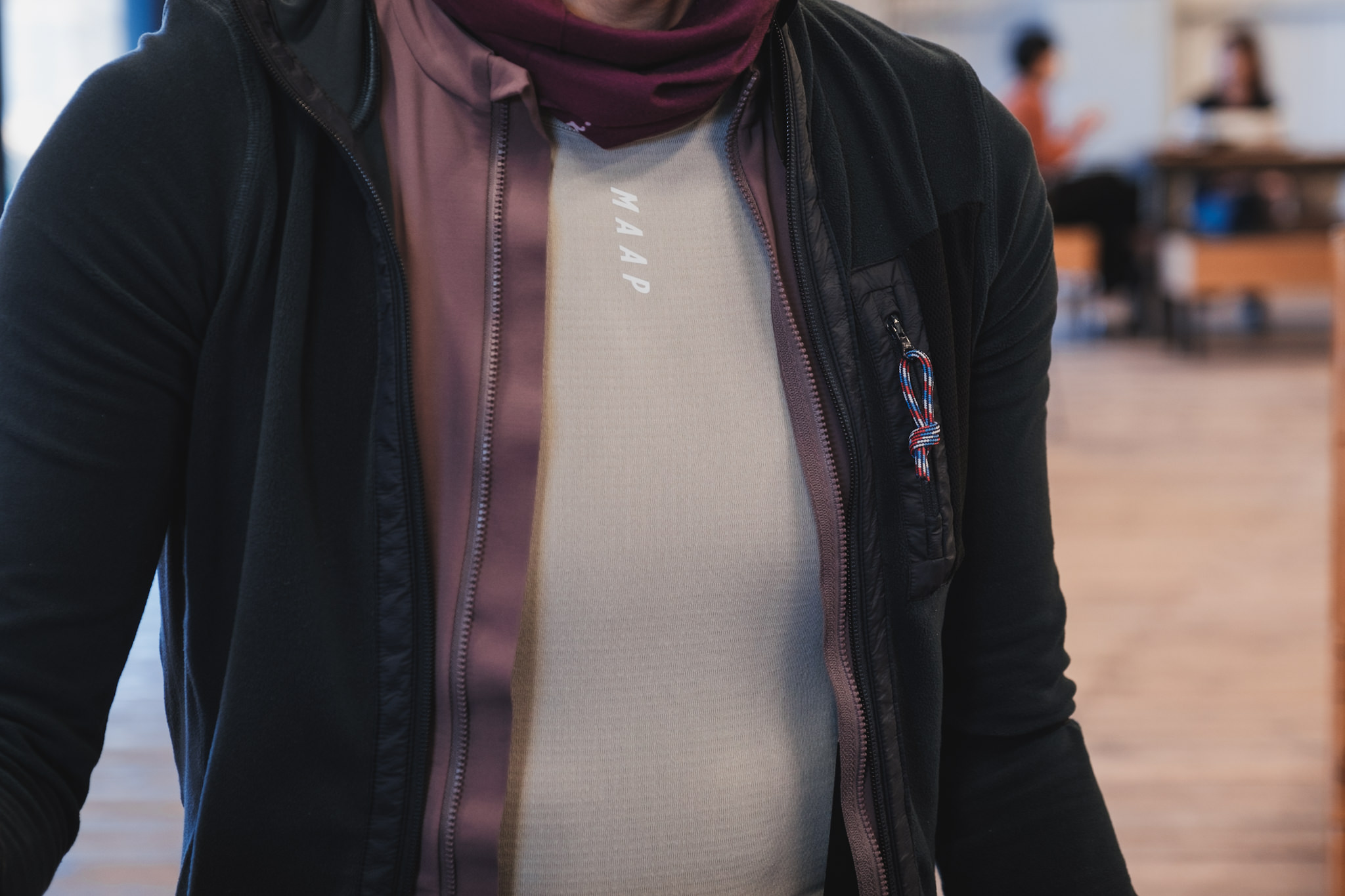
Select thickness and material according to the way you ride.
The appropriate base layer depends on the individual’s riding style. For high intensity or high temperatures, a lightweight base layer should be used, and layers should be added as needed, while a midweight or heavyweight layer should be selected for lower temperatures.
The material itself depends on your preference for texture, with merino being the best choice for comfort and synthetic fibers being the most cost-effective.
Choose a tight fit
The rule of thumb is to choose a size and silhouette that adheres closely to the skin so that it can absorb sweat.
You may choose a mountaineering brand, but be aware that they may have a relaxed fit that does not adhere closely.
Wear layers as needed
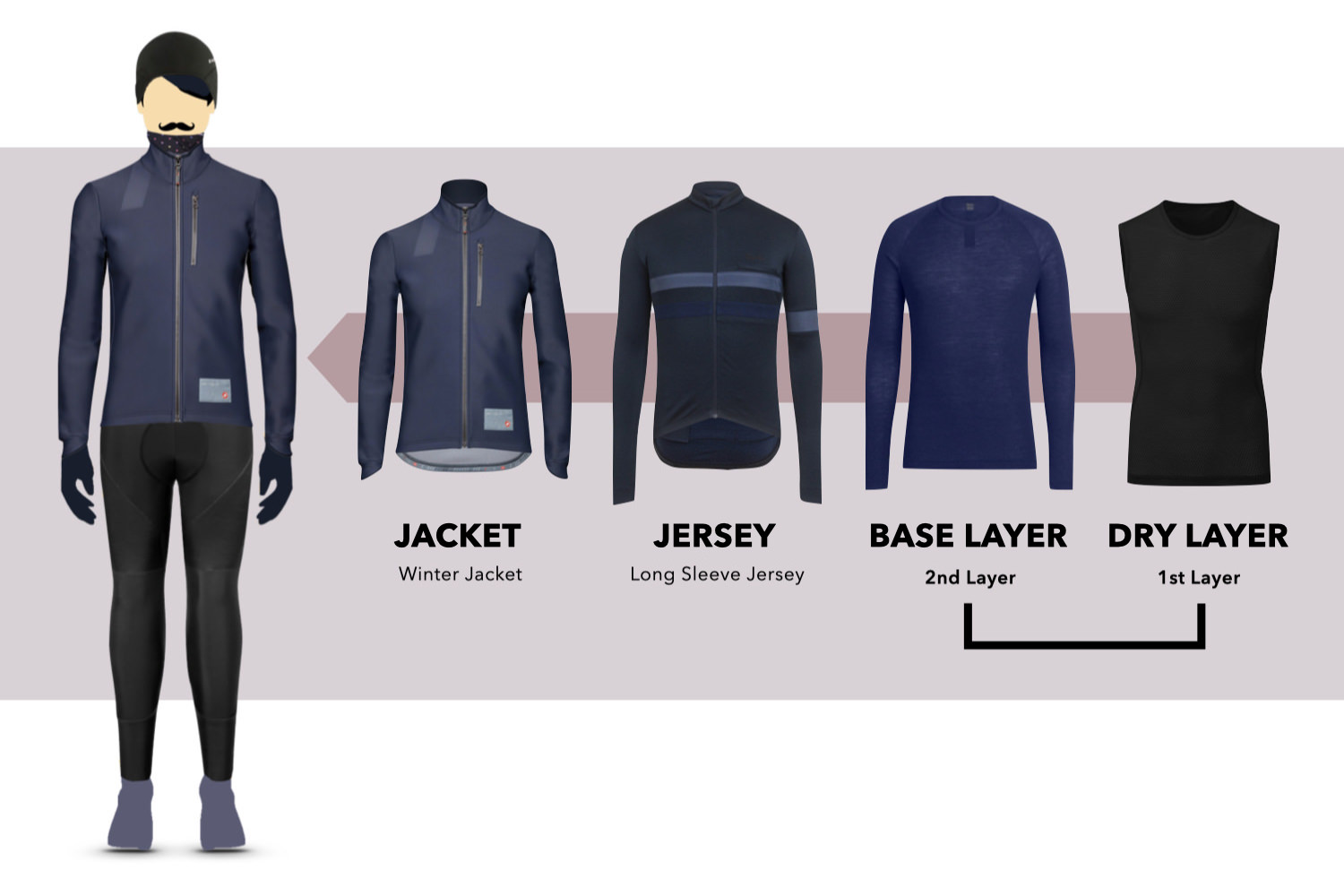
Although a single winter base layer can be used alone, layering a summer dry layer underneath is also effective in preventing chills.
Moisture absorbed by the dry layer is absorbed by the winter base layer (second layer), making it difficult to sweat cold.
If you are worried about getting sweaty cold with one winter layer, try wearing two layers in combination with a summer layer. You will feel more comfortable than usual.
4. The Best Base Layer Brands
We introduce brands that offer a lineup of functional base layers. You may choose to have the same brand that you normally wear, but here we have selected brands that are accepted by many cyclists.
Rapha (UK)
Rapha offers high-quality, comfortable baselayers, with good coloring and design, and the performance you’d expect from a top brand.
Rapha Base Layers
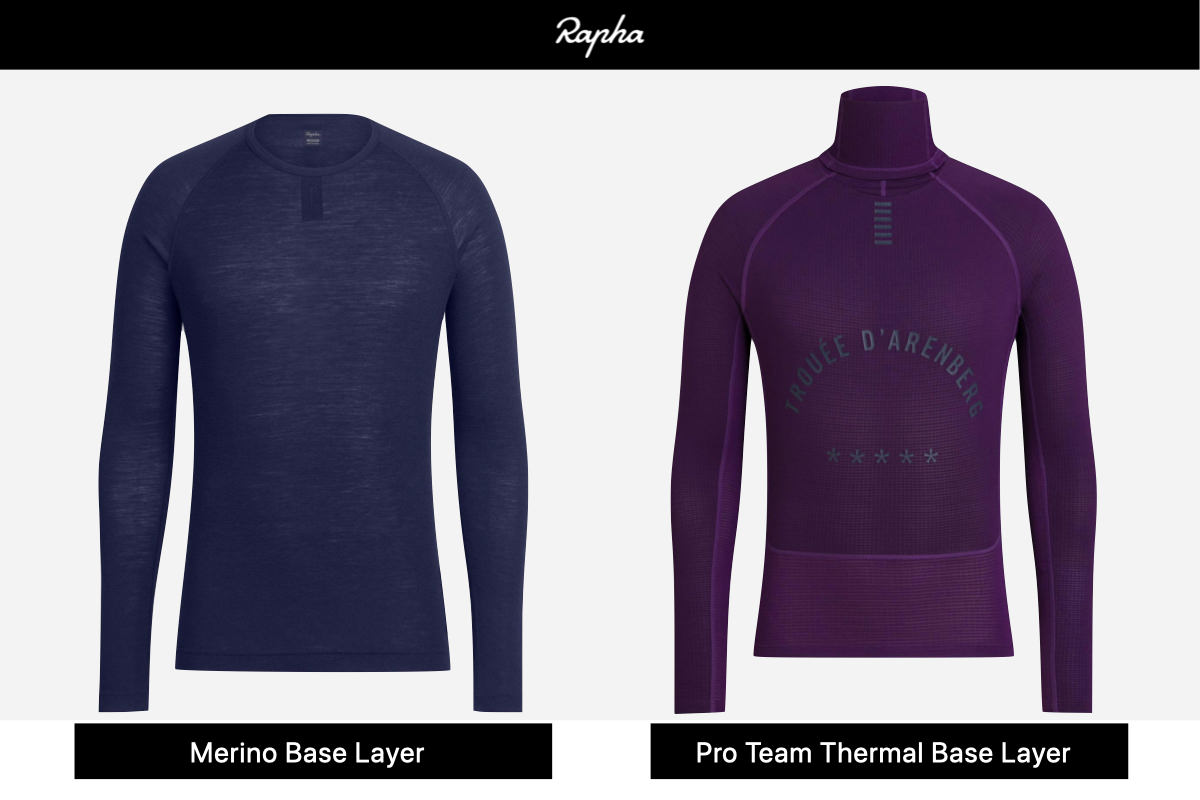
Merino Base Layer [Wool / Lightweight] Lightweight model that is comfortable to wear and works well for a long season from fall to spring ($95.00).
Pro Team Thermal Base Layer [Synthetic / Midweight] Warm to the neck, mid-winter-specific base layer to wear from around 0°C ($105.00).
Rapha Base Layers: Mens | Womens
Craft (Sweden)
Swedish-born Craft, which knows a thing or two about thermal insulation, has been improving its base layers for nearly 40 years.
Its lineup is divided into four categories: Comfort / Intensity / Extreme / Wool, of which the two series Intensity and Extreme are suitable for cycling.
Craft Base Layers
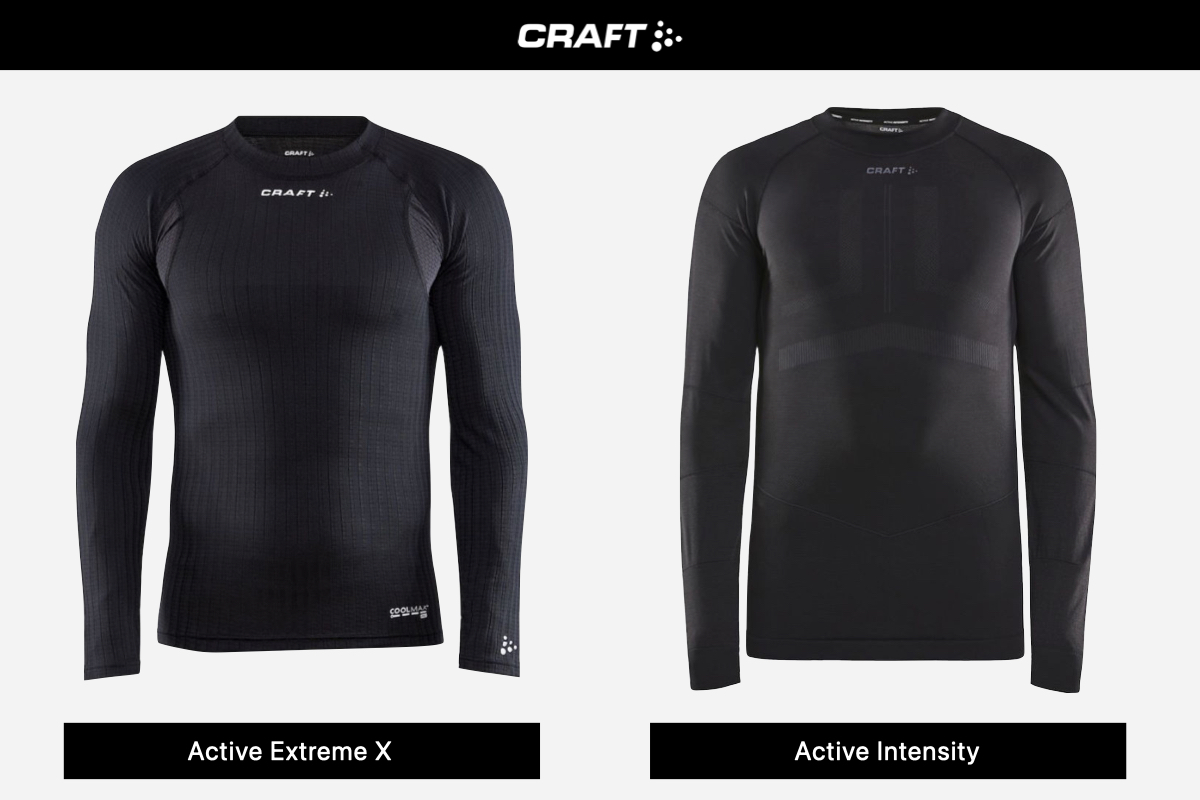
Active Extreme X [Synthetic / Lightweight] Craft’s active series is ideal for temperatures ranging from -5 to +10℃. Extreme X uses COOLMAX as the base fabric, and features good perspiration release even at high intensity ($84.99).
Active Intensity [Synthetic / Lightweight] The Intensity is more comfortable than the Extreme and is ideal for cyclists who mainly ride less strenuous activities. ($64.99)
mont-bell (Japan)
Originally a base layer for mountaineering, Montbell’s “GeoLine” is also used among cyclists.
Because of its high antimicrobial effect, it does not stink even when worn for long periods of time, and its affordable price makes it easy to purchase as a first base layer.
Mont-bell Base Layers
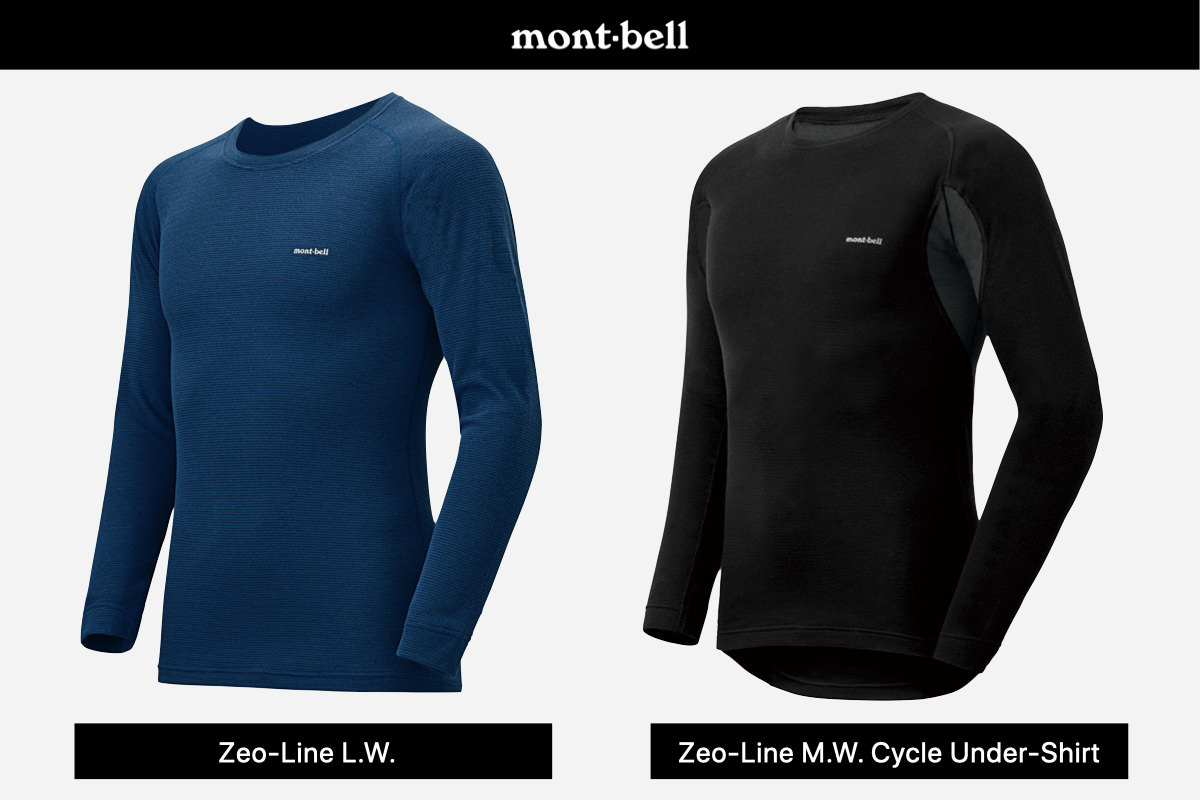
Zeo-Line L.W. [Synthetic / Lightweight] The lightweight model dries quickly and can be used in all seasons.
Zeo-Line Light Weight Cycle Under Shirt [Synthetic / Midweight] Middle-weight, cycling-specific type. Hybrid model using L.W. for areas prone to steam.
dhb (UK)
Wiggle CRC’s high performance brand, dhb.
With warm merino wool base layers at affordable prices, dhb is the perfect brand for your first winter undergarments.
dhb Base Layers
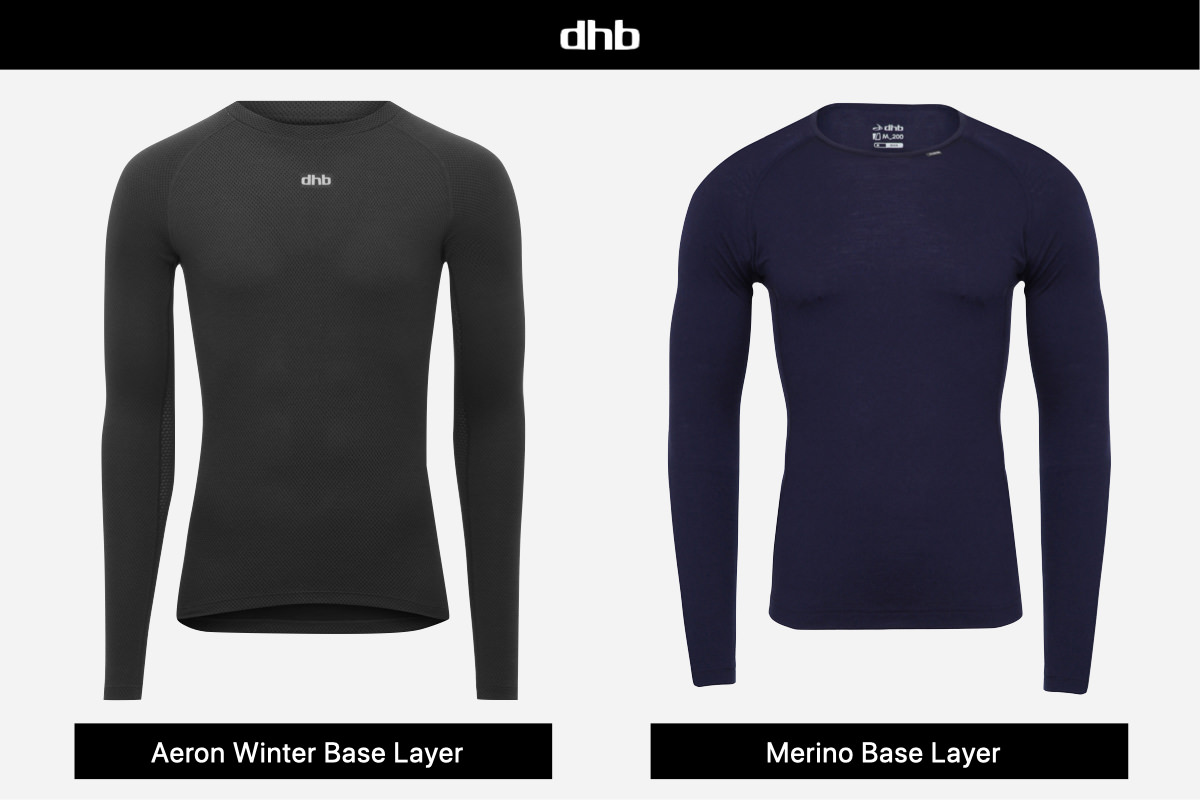
Aeron Polartec Long Sleeve Base Layer [Synthetic / Midweight] Base layer optimised for high intensity rides with a double knit (£50.00).
Merino Long Sleeve Base Layer [Wool / Midweight] This base layer is perfect for midwinter and has no logo on the chest (£50.00).
Author
 |
Tats Shimizu(@tats_lovecyclist) Editor in Chief. Having been riding sports bikes for 10 years. He likes to unravel the trends in the sport bike industry, especially road bikes, from a marketing perspective. At the same time, he has extensive friendships with cycling apparel brands from around the world and proposes various styles through the media. His main bikes are Factor O2 (road) and LS (gravel). |















